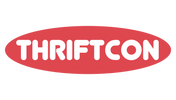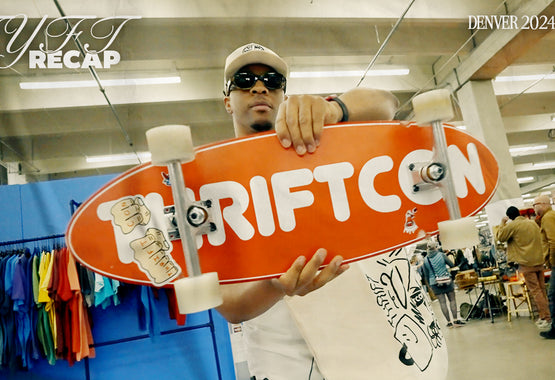Podcast: Adidas vs. Puma


Adidas and Puma were formed out of a dangerous cocktail of family feud, corruption, and million dollar endorsements. The globalization of sports, the business of sponsorships, sneaker culture and so much more have been marked by the influence of these two brands. It is our duty to amplify our evangelical vintage voices and deliver to you a riveting history: Adidas vs. Puma.
Formation of Gebruder Dassler, Adidas and Puma
The story begins in the early 1900s in a small town by the name of Herzogenaurach, not far from Nuremberg, in the northern part of Bavaria. Adolf and Rudolf Dassler, also known as Adi and Rudi, were born to a working class family consisting of a long lineage of weavers. Following WWI, with the family businesses of laundry and weaving withering away, Adi undertook a small shoe production unit in his mother’s former laundering shed. Raw materials were scarce in post-war Germany. Strips of leather from helmets were re-fabricated for soles, torn parachutes for slippers; Adi used the scraps from barren battlefields as the building blocks of a billion dollar business. With no electricity in the shed, Adi invented a leather trimmer powered by bicycle, enlisting the help of friends to pedal to get the band turning.
Three years into the venture, Adi's younger brother Rudi joined the business. Despite their clashing personalities, the partnership thrives. Adi filled his days obsessed with function and design, while Rudi took the lead on sales. Although the country is devastated by an economic depression, the popularity of sports were beginning to take hold. In response, Adi sees an opportunity to launch his inventive new sports products, and on July 1st, 1924, “Gebruder Dassler, Sportschuhfabrik, Herzogenaurach was officially launched. Track spikes and soccer boots were the company's flagship products and as the years passed, sales and opportunity began to grow.
As the Dassler’s business was thriving throughout Germany and Europe, so too was the Nazi movement. Swept up by the nationalist trend, the Dassler brother registered for party membership on May 1, 1933, just three months after Hitler seized power. For their business, Nazism had a positive effect. Hitler held sports in high regard, highlighting camaraderie and discipline as corresponding values of the party. As the Nazi fervor grew, so too did the popularity of sport and sports shoes.
As fate would have it, the 1936 Olympic games were held in Nazi Germany. Adi Dassler could be assured that many of the German athletes would be donning Dassler spikes, but he had his eyes set on one athlete in particular at the 1936 games, Jesse Owens. Owens was a dominating force at the 1936 Olympics; winning gold in the long jump, the 100 meter dash and the 200 meter dash. Hitler was so upset with Owens' performance that he walked out of the arena in disgust after his victory in the 100. Owens' historical performances were all accomplished in a dark pair of Dassler spikes with two stripes of leather running down the side.
As the business continued to succeed, tensions among European states grow to a fury as WWII began. In August 1940, Adi was instructed to report for training as a radio technician at a regiment near Nuremberg, but his military obligations didn’t last long, being relieved of his duties just several months later in February of 1941. Adi's expertise was deemed indispensable for Gebruder Dassler. As the war progresses, Gebruder Dassler continued to dodge a series of state imposed industry shut-downs. Rudi continued to lobby for his position as the leader of the company with limited success.
Resentment quickly grew to hatred in January 1943, when Hitler called for the complete mobilization of the German people. All men from age sixteen to sixty-five and women from seventeen to forty-five could be ask to defend the Reich. Adolf Dassler was deemed invaluable to the success of Gebruder Dassler; Rudi was drafted to a regiment in Glauchau, Saxony. Rudi regarded this as an unbearable injustice, convinced his brother had plotted to have him sent away.
After being moved to an office job, Rudi writes Adi early in 1943, vowing to have production at the factory closed for the war. Rudi attempted to maintain that if he could not be present as a decision maker at the company, the company would close. Ultimately, the state determined the production assets of the company would be used to manufacture spare weapon parts and Adi would remain in command.
In 1945, Rudi narrowly escaped imprisonment and execution at the hands of Russian Soldiers by dissenting from, and abandoning his unit. In April 1945, Herzogenaurach peacefully surrendered to U.S. forces. Rudi was arrested by U.S. soldiers for allegedly working for Nazi intelligence services and was held at an internment camp in Hammelburg. Rudi was released July 31, 1946 but was convinced his brother contributed or cooperated with his incarceration. During the same time, Adi was in the midst of defending his case against the denazification committee. Rudi made multiple statements against his brother in an attempt to seize control of the factory.
Tensions ultimately boiled over in April 1948 and Rudi moved across the Aurach River to form his own company. The brothers painfully split up assets and patents, with Adi retaining possession of the original Dassler Villa. Adi registers his new business as a combination of his nickname and surname, Adidas. Rudi attempted to do the same, forming Ruda; which was quickly reregistered as Puma.
Adidas and Puma on the World's Stage
In the 50s Puma was ruling the soccer landscape with their lighter boot; poised to take over the international scene. Rudi lost Puma's professional soccer stronghold during an argument with German national soccer coach Sepp Herberger. Herberger decided to remove himself from Rudi and form a close relationship with Adi. Herberger brought Adi on the sidelines of games to fix players’ boots on site during matches.
This would prove to give Adidas a huge PR boost in 1954, when the Germans defeated the Hungarians in the World Cup - against all odds. The Germans had already lost to the Hungarians 8-3 in prelims, when during the rainy championship Adi introduced his ace in the hole for the German squad - adjustable cleats. He fitted the Germans with adjustable cleats that featured shorter tips in the first half, but in the second half when the field turned to mud, he screwed the cleats so the tips would be longer and gain more traction. The Germans went on to win and Adi is famously pictured with Gerberger in the victory snapshot, along with receiving praise from players and coaches in the media for his boots. Following this title, Adidas ruled the international soccer scene.
During the mid 1950s, both brothers ruled over their companies with the feud very much alive. While Puma was more firmly established with local German soccer clubs, Adidas was more widely recognized on an international scale and would outfit the German national team for decades. The fate-determining turning point for the two brands: the introduction of sponsorships for athletes.
In 1956, Adi sent his eldest son Horst to the Melbourne olympics to peddle Adidas spikes to athletes. During this time, sponsorship endorsements for Olympic athletes was still illegal. Horst invited entire delegations of athletes to receive free Adidas spikes, betting on the fact he wouldn’t be reprimanded as the spikes are seen as necessary technical equipment. Horst carried the momentum into the 1960 Olympic games in Rome, flooding the athletes with complementary Adidas product. The clear cut favorite to win the 100 at the 1960 olympics was a controversial German sprinter by the name of Armin Hary. Hary, although a loyal Adidas athlete, caught wind of endorsement money lining the pockets of other athletes at the games. When approached by Adidas, he requested compensation. Adi passed on the deal, banking on the free product model that had worked so well at the 1954 games. Hary then approached Puma for compensation, and Puma agreed. Armin Hary won the 100 meter dash in a pair of Puma spikes, then subsequently approached the medal stand in a pair of Adidas; attempting to cash in on both companies. Adi was appalled by Hary's disloyalty and cut ties with the runner indefinitely.
The battle for olympic market share continued for decades with conflicts in Mexico (1964) and Munich (1972). The competition wasn't contained to just the olympics, however. Conflicts arose in every sport from American football, to basketball, tennis and everything in between. A constant struggle to enter new markets, sign new athletes, release new product and infiltrate new cultures kept the two brands and brothers at odds until their deaths.
The night of Rudolf’s death, a chaplain arranged a call between Rudolf and Adi. Adi declined to cross the river and see his brother one last time, but is said to have conveyed his remorse and forgiveness. Rudolf Dassler passed away shortly after on October 27, 1974. In line with the rivalry, Adidas issued a sarcastic statement after his death. It read, “Out of pity, the family of Adolf Dassler will not comment on the death of Rudolf Dassler."
Although both companies reveled in an incredible amount of success, under the leadership of Horst Dassler and his successors, Adidas is clearly the more successful of the two in revenue, profit and cultural impact. It's fun to wonder where would the Dassler brother's legacy have led if the two had come to terms following WWII. Would the Dassler shoe empire be larger than Nike? Would Nike have been able to rise to popularity over Adidas if there wasn't the ever present threat of Puma? The world will never know.
Listen to our podcast for a more in-depth dive of the history of Adidas vs. Puma.













